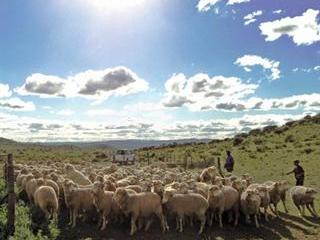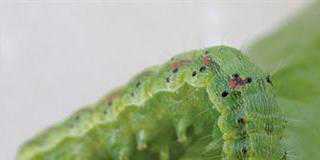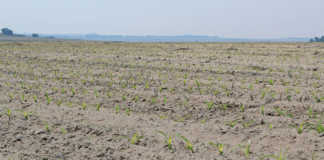
Exceeding a certain stocking rate in the Karoo can seriously harm the arid region’s shrub/grass veld. This is the conclusion of trials with sheep conducted by scientists Gerrit du Toit (who farms in the Hanover district), Prof Hennie Snyman, and Paul Malan.
They monitored the impact of three different sheep stocking rates on litter and dung deposition, soil quality and vegetation dynamics on a study area of Nama Karoo shrub/grass veld with an official long-term grazing capacity of 2,6ha/SSU (small-stock unit) or 13ha/MLU (mature livestock unit).
The trial used stocking rates of 4 SSU/ha, 8 SSU/ha and 16 SSU/ ha (0,8 MLU/ha or 1,25ha/ MLU, 1,6 MLU/ ha or 0,625ha/ MLU and 16 SSU/ha or 0,27ha/MLU).
Drought and unreliable rainfall are often wrongly blamed for a production decline and failure because changes in the ecosystem are not properly monitored, notes Du Toit. He stressed that the research should be seen in context of the contention that hoof action improves water penetration by breaking up hard surface crusts.
In fact, several studies have concluded that heavy grazing increases exposure to sunlight and thus soil temperature and reduces below-ground competition for soil-water and nutrients due to reduced leaf and root area.
At the same time, some researchers argue that if high impact grazing is successful it’s not because of ‘physical animal impact’.
Studies even show that high grazing intensity usually increases soil compaction and soil density while reducing soil aggregate stability and fertility.
Whatever the case, while heavy grazing is said to accelerate nutrient cycling in African savannas and elsewhere, the subject has received little research attention in the Karoo arid grass/shrub vegetation.
TRIAL 1: Litter and dung
As the amount of litter and dung on the soil depends largely on the grazing intensity, the amount of dung deposited was directly proportional to the stocking rate – to a point. But 80% of the dung was deposited on only 10% of the camp area, mostly at watering points and sleeping places where the most soil compaction also took place.
“While more litter can be beneficial over the short term – by covering the soil surface, lowering soil temperature and increasing infiltration – the reduced amount of dung each sheep produces at a very high stocking rate can be due to a lower feed intake under competition for available fodder,” explained Du Toit.
This could reduce animal production. “With the sparse nature of the Karoo shrub/grass veld, it’s questionable whether the higher percentage of plant litter on soil under higher stocking rates will have any real long-term benefit,” he stressed. More research is needed to better understand the relation between the rate of physical disintegration of organic matter and the nutrient release rate.
TRIAL 2: Rainfall infiltration and soil compaction
This trial found that increasing the stocking rate – and therefore hoof action – over the short term increased soil compaction and density, and decreased the infiltration rate. Soil compaction was also more pronounced and persisted for a longer period. “Even after a two-year rest, the more heavily grazed areas could still have a higher soil density and lower soil moisture content than more lightly grazed areas.”
A stocking rate of 4 SSU/ha had the least influence on the soil. The light trampling loosened the topsoil sufficiently to increase the initial infiltration rate. The infiltration rate was 17% higher at 4 SSU/ha than at 16 SSU/ha and 14% lower at 16 SSU/ha than the control.
Without trampling, the soil surface tends to form a crust, severely reducing infiltration during the first five minutes of becoming wet, cautions Du Toit. “With hydrology – the movement, distribution and quality of water – a stocking rate that uses more than 50% of the plant material is rarely sustainable,” he adds.
TRIAL 3: Plant Cover
The basal cover of Karoo shrubs only decreased at the highest stocking rate, with witblommetjie (Phymaspermum parvifolium) the most sensitive to intensive grazing. Increasing the existing stocking rate decreased canopy cover, with the palatable Karoo bushes bloublommetjie (Felicia muricata), gannabos (Salsola calluna) and waterfinder (Walafrida geniculata) the most affected.
The canopy cover of bewertjiegras (Eragrostis obtusa) decreased the most at a stocking rate of 16 SSU/ha. “Generally, higher stocking densities need shorter grazing periods to limit the degree of defoliation.” A light stocking rate (4 SSU/ha) appeared to be the answer under these specifc conditions.
And the team’s conclusion? “We think that a low stocking rate has the least detrimental long-term effect on the veld. This doesn’t mean that a high stocking rate should be avoided, as it can help to regenerate the vegetation and increase production over the short term. In terms of hydrology, grazing intensity and rotation must be adapted for sustainable utilisation by livestock.
“While heavy grazing may cause severe compaction, which reduces infiltration, promotes surface run-off and encourages soil erosion, the absence of trampling (no grazing) decreased infiltration capacity of the soil to nearly the same extent as very severe trampling.”
Contact Gerrit du Toit at 082 576 2578, or [email protected]













